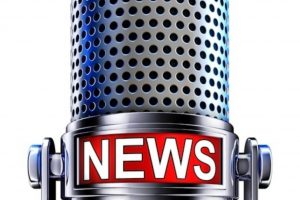
Avoid the bridge to nowhere, keep your communications message on track (media training part II)
While journalists and talk show hosts give readers and viewers the impression they’re in the driver’s seat, in actuality, when they are interviewing a skilled spokesperson this is not always the case. An experienced spokesperson is expert at bridging to their company or brand messages, regardless of what questions are asked.
So, whether your media relations specialist proactively books an interview to introduce a new product, showcase your thought leadership, or spotlight a cause in need of external support. Or if you’re in the hot seat dealing with crisis communication, the main reason for speaking with a reporter is to tell your side of a story.
How do you do this? Know and stay focused on your messages! As TJ Walker states in his book Media Training A-Z, “You have zero control over reporters [questions]. You have 100 percent control over what comes out of your mouth.” That’s where good strategic positioning and media training come in.
A media training session isn’t just an opportunity to get comfortable with the interview process. Rather, the primary purpose is to hone in on what information you want to communicate during an interview and identify examples and anecdotes that back up your claims. These are your messages and proof points. Doing so aids in effectively reaching the goals set out in your strategic communications plan.
As you determine and fine-tune your messaging, realize that you want to consistently communicate the same core information about your company regardless of the media outlet or target audiences – it’s the language and examples that differ so that the messages are relevant to the respective audience.
If you’re not preparing for a specific interview, the “stage” should be set during media training to conduct mock interviews representing different media types and target audiences. For example, one scenario could mimic being interviewed by a trade publication. The “reporter” will be well-versed in your industry and able to address topics in greater detail. In addition, the audience will understand industry terms – aka jargon – so you can feel comfortable getting specific with your messaging.
On the other hand, in preparing for an interview with a mainstream consumer media outlet, you need to make your key messages relevant to a broader audience that likely lacks an in-depth knowledge of your industry. You probably also need to motivate different behaviors among consumers vs. your industry. Say, for example, you sell fashionable high heeled shoes with a new comfort technology. While the brand descriptors, differentiators and advantages will remain central to your messaging, for interviews with industry media you might talk about distribution channels and business partnerships, while for consumer media you would cite customer anecdotes about the comfort and describe the array of styles.
You should also keep in mind that your messages and proof points need to bring your product, service or company “to life” – they should “paint a picture” that’s memorable to business and consumer target audiences. This is how you’ll really connect yourself and your brand with your audiences!
In Don’t Talk to the Media Until…29 Secrets You Need to Know Before You Open Your Mouth to a Reporter, Gerard Braud suggests visualizing the messaging process as a growing oak tree. The trunk is your core message. From there ‘branch’ out with three supporting messages, which then sprout three leaves each, representing more specific proof points.
Once your oak tree has bloomed, it’s time to focus your media training on interviewing techniques for delivering your messages. We started this post stating that you, as the spokesperson, should assume the driver’s seat during an interview. Learning how to not always answer questions while insuring your credibility is key to this – and key to ensuring people see your beautiful oak tree!
Up next in our Media Training series… The Successful Sound Bite.



